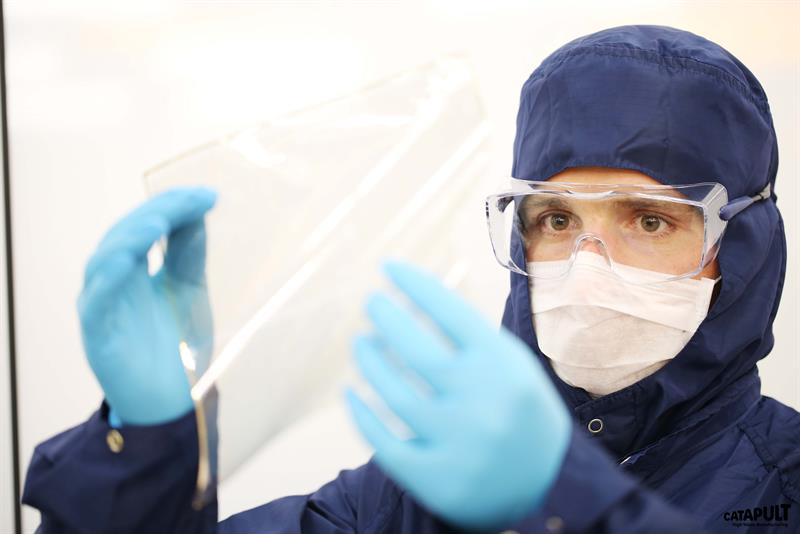“The current approach,” he wrote in his report, “is sub critical, follows no national strategy and pays insufficient attention to business requirements and the location of relevant expertise”.
He also found that, despite more than 50 TICs receiving more than £150million in public money during the previous two years, there was ‘no formal process for oversight, coordination, promotion and prioritisation of investment at a national level’. Dr Hauser also said the scale of investment was often too small and short term.
What came out of that report was the Catapult Network: seven centres focused on global markets and backed by £200m of public money.
In 2014, Industry Secretary Vince Cable asked Dr Hauser to review progress. “The UK must maintain its focus and commitment on Catapults … over the long term,” Dr Hauser recommended. “InnovateUK should grow the network through a clear and transparent process … with a view to having 30 Catapults by 2030.”
InnovateUK is already expanding the network, but how does it rate progress? Kevin Baughan is InnovateUK’s chief development officer. “Five or six years into the Catapult programme, we think it’s performing well. It’s attracting a great deal of interest from the Government and is an important part of the way in which it will achieve its goals. And the level of engagement is impressive.”
Yet, despite the apparent simplification of the innovation process, the Catapults remained somewhat inaccessible, at least in the view of Professor Dame Ann Dowling in her 2014 report. “One of the important point raised by the Dowling Report was complexity,” said Baughan, “and the difficulty of engaging with networks. We took that to heart.

“The Catapult network has been reshaped,” he continued, “to help businesses to engage with available funding and to connect to innovation. We have now moved forward quite a way when it comes to delivery.”
Part of the complexity was the names of the Catapults themselves; Baughan said people needed to know which Catapult was appropriate to them. “Now, InnovateUK is addressing four broad sectors; instead of needing to know the right name, companies only need to know the market they’re addressing – manufacturing or materials, for example. That gives them a starting point and we’re ready to help them.
Work on flexible electronics is underway at the Centre for Process Innovation, one of the seven elements of the High Value Manufacturing Catapult
“Electronics companies will also be likely to be interested in the emerging and enabling technology sector – and there’s a lot of work going on in those areas in electronics and systems.”
All of this activity is backed by significant money; InnovateUK has £561m available in its 2016/2017 financial year – £86m of which is earmarked for emerging and enabling technologies. It will also offer two competitions per year for each of the four sectors, plus two competitions for applications from any sector.
While there was, perhaps, a perception that Clusters were trying to do it all themselves, that has changed, in Baughan’s view. “We are now working with clusters,” he contended. “We are reaching out; for example, to research networks and other important players and are now seeing some joint arrangements.
“For example, the Transport Systems Catapult has established a joint venture with another organisation in that field; it has recognised there are other important people to work with. It’s the job of Catapults to help companies entered the sector and to move forward.”
With that in mind, Baughan said the Catapults were, in general, building good relationships. “Here’s one example,” he offered. “The recently announced Compound Semiconductor Applications Catapult is going to be working closely with the Compound Semiconductor Centre set up by Cardiff University and IQE.
The Compound Semiconductor Applications Catapult will focus on challenges in four technology streams: power electronics; RF/microwave; photonics; and sensors. And there’s a good reason why the Compound Semiconductor Catapult has been set up. The global market for compound semiconductors is expected to be worth £125billion by 2025 and InnovateUK says the UK has the potential to capture a significant proportion of this because of a world class research base in the technology.
“These collaborations are a good opportunity to things to be joined up more effectively,” he continued, “and this is also making it easier for businesses to access new opportunities. That’s important because public money is being invested and we need to deliver results.”
 When launched, the network featured seven Catapults. Today, there are 11 and, as noted earlier, Dr Hauser suggested this could increase to 30 in the next decade or so. “The latest Catapults to be set up include Energy Systems and Precision Medicine,” Baughan pointed out. “These are sectors where there is a global market, but also where it is possible to bring together UK based resources to make something happen.
When launched, the network featured seven Catapults. Today, there are 11 and, as noted earlier, Dr Hauser suggested this could increase to 30 in the next decade or so. “The latest Catapults to be set up include Energy Systems and Precision Medicine,” Baughan pointed out. “These are sectors where there is a global market, but also where it is possible to bring together UK based resources to make something happen.
“In some instances,” he continued, “there are markets where things have already begun to happen and, when that’s the case, there’s no need for a Catapult. More mature areas may already have organisations that support them in place and don’t need the same level of public funding.”
“The Catapult network has been reshaped to help businesses to connect to innovation.” Kevin Baughan
As well as adding Catapults, the network has begun to evolve. “For example, the Cell Catapult is now Cell and Gene Therapy. This is following a trend to do cutting edge work that benefits the sector.” He noted the Cell and Gene Therapy Catapult was working on very early stage activities just coming out of the lab. “This is important,” Baughan contended. “But the problem is making sure that small companies have the time and energy to focus on the market opportunities. What’s important is for us to make sure the Catapult network is simple to access.”
Catapults, Baughan asserted, are set up for all types of business. “We’re clear about that, we’re passionate and we have invested to make sure Catapults are engaging with suitable companies. For example, although the High Value Manufacturing (HVM) Catapult has a number of big partners – and we’re proud that big companies want to work with us – it also has HVM Access, which encourages reaching out to smaller companies.”
Having said that, he pointed out that business also has a part to play in making the Catapults successful. “It’s a two way challenge; organisations need to reach out to the Catapults and we have to recognise that small businesses may often be too busy to do that. But what we can offer is access to something which they can try at a reasonable cost to find out whether it’s the place where they can make something happen.”
Asked for evidence of effectiveness, Baughan said: “We’re engaging with a couple of thousand companies a year, some of which are known to InnovateUK, others are new. But it’s a large number of active companies and we have probably worked with more than 7500 companies since the Catapult network was set up,” he concluded.














